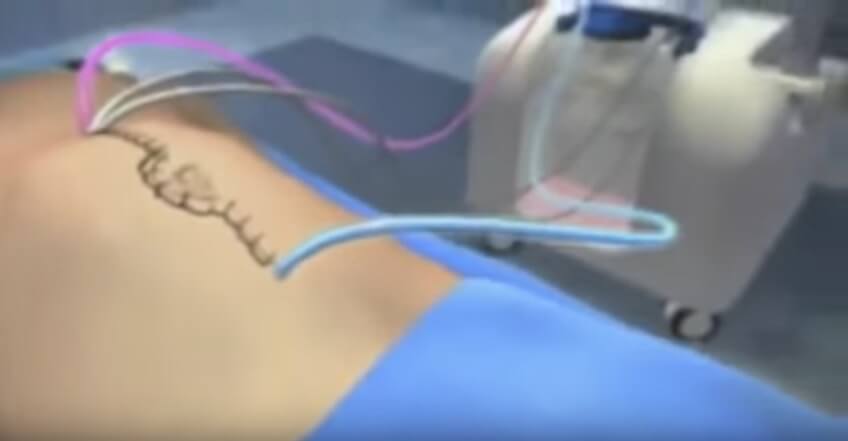Diseases without peritoneal dissemination and their treatment:
There are tumors without peritoneal dissemination in which there is significant probability of postoperative spread. These tumors are the penetrated gastrointestinal cancer in the free peritoneal cavity, the locally advanced tumors, and those tumors that are located in narrow limits of resection such as the gastroesophageal junction or the pelvis, or the head of the pancreas. Hyperthermic intraoperative intraperitoneal chemotherapy may be used in these cases to prevent the development of locoregional recurrence.
Locoregional recurrences are the result of tumor growth that originate from cancer emboli that exfoliate during surgical manipulations from traumatized interstitial tissues, severed lymphatic channels, and spillage from venous blood. The cancerous emboli are entrapped with fibrin, inflammatory cells during wound healing and stimulated by growth factors. The cancer emboli grow up to large tumors during the first 2-3 years after initial surgery.
During initial surgery cancer emboli are microscopic nodules that can be easily eradicated if intraperitoneal chemotherapy is used.
Mitomycin-C is used in colorectal and gastric cancer for 90 minutes. Mitomycin-C can be used in combination with cis-platin in gastric cancer. In pancreatic cancer gemcitabine is used for 60 minutes. The combination of cis-platin and doxorubicin is used in soft tissue sarcomas for 90 minutes.
Diseases without peritoneal dissemination | Dr. Tentes' related publications:
-
Α. Α. Τέντες, Ν. Πάλλας, Ε. Σαμαντά, Ε. Ευωδιά, Κ. Μ. Στάμου. Προφυλακτική ενδοπεριτοναϊκή χημειοθεραπεία κατά την R0 εκτομή σε επεμβάσεις για αδενοκαρκίνωμα παγκρέατος. 29ο Πανελλήνιο Συνέδριο Χειρουργικής, Αθήνα, 12-15/11/2014
-
A. A. Tentes, K. Stamou, N. Pallas, C. Karamveri, D. Kyziridis, C. Christakis. The effect of hyperthermic intraoperative intraperitoneal chemotherapy (HIPEC) as an adjuvant in patients with resectable pancreatic cancer. Int J Hyperthermia 2016, 32: 895-899, doi: 10.1080/02656736.2016.1227094 [View]
